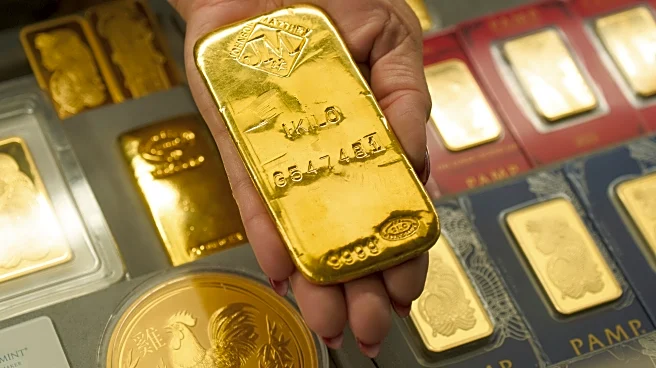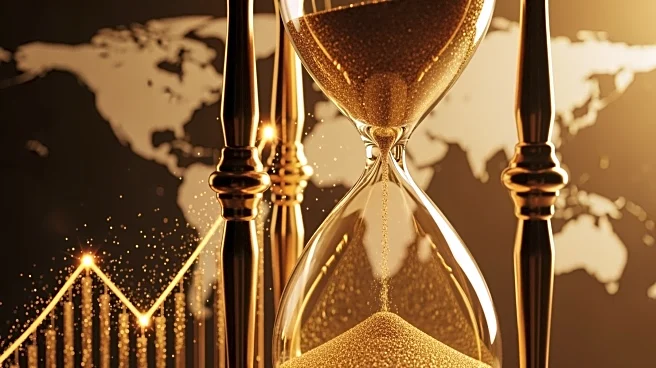What's Happening?
Gold prices have reached unprecedented levels, surpassing $4,300 per ounce for the first time, marking a 60% increase year-to-date. This surge is attributed to expectations of Federal Reserve rate cuts,
political uncertainty in the U.S., and global tensions. Analysts predict that gold could reach $5,000 per ounce if current conditions persist. The rally is supported by record inflows into gold-backed ETFs and significant purchases by central banks. In India, the Diwali festival has driven domestic gold prices to decade highs, with premiums reaching $25 per ounce above global benchmarks.
Why It's Important?
The rise in gold prices reflects broader economic and geopolitical uncertainties, including concerns over U.S. Federal Reserve policies, trade tensions, and geopolitical conflicts. As a traditional safe-haven asset, gold's increasing value indicates investor anxiety about potential economic instability. This trend could impact various stakeholders, including investors seeking to hedge against inflation and currency devaluation, and central banks looking to diversify reserves. The sustained demand for gold may also influence monetary policies and financial markets globally.
What's Next?
Future movements in gold prices will likely depend on Federal Reserve actions, particularly interest rate decisions. Any changes in U.S.-China trade relations or geopolitical developments could further influence gold's trajectory. Seasonal demand in Asia, particularly during the Indian wedding season, may continue to support high prices. However, if the Federal Reserve delays rate cuts or if the U.S. dollar strengthens, there could be a pullback in gold prices.













